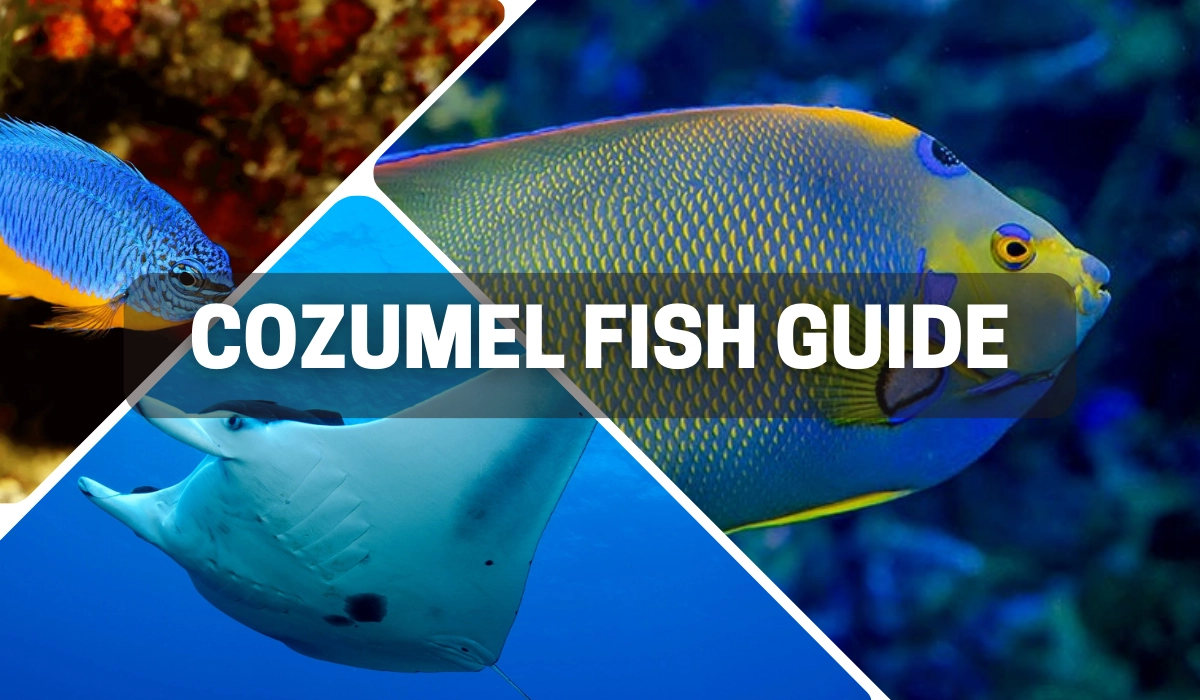In This Article
The best time of year to spot Cozumel fish is during the dry season, which typically spans from November to April.
During these months, water visibility tends to be clearer, making it easier to observe the diverse marine life that inhabits the reefs around Cozumel.
Key Takeaways:
- Parrotfish:
- Colorful scales that help maintain coral reefs.
- Angelfish:
- Bright colors and distinct patterns.
- Blue Tang:
- Bright blue body with yellow tail.
- Sergeant Major:
- Silver body with five black stripes.
- French Grunt:
- Yellowish body with blue stripes and a grunting sound.
- Damselfish:
- Small, colorful fish with aggressive behavior.
- Butterflyfish:
- Brightly colored with patterns resembling butterflies.
- Hogfish:
- Pinkish body with a pig-like snout.
- Triggerfish:
- Unique shape with a trigger-like dorsal fin.
- Pufferfish:
- Inflatable body for defense against predators.
- Grouper:
- Large fish with a powerful body and wide mouth.
- Barracuda:
- Long, slender body with sharp teeth.
- Snapper:
- Silvery body with red accents.
- Manta Ray:
- Large, graceful creatures with wing-like fins.
- Lionfish:
- Striking appearance with venomous spines.
- Boxfish:
- Box-shaped body with vibrant colors.
- Stingray:
- Flat body with a venomous stinger on the tail.
- Trumpetfish:
- Long, slender body that can change color to blend in.
Snorkeling and Diving Seasons to Spot Fishes
- Water temperatures range from 75°F to 82°F (24°C to 28°C).
- Optimal visibility and comfortable conditions.
- Increases chances of encountering diverse fish species.
- Potential for larger marine creatures like eagle rays and nurse sharks.
List of 18 types of Cozumel fishes you can expect to see
When snorkeling and diving in the vibrant waters of Cozumel, you can expect to encounter an array of colorful and diverse fish species.
Also Check: Cozumel Fish Guide Map
Some of the most commonly sighted Cozumel fish include:
1. Parrotfish

Parrotfish are colorful fish you can find in the waters around Cozumel. They are known for their bright colors and beak-like mouths.
Why They’re Special:
- Colorful Scales: Parrotfish have vibrant colors like blue, green, and pink.
- Coral Eaters: They help keep the reefs clean by eating algae off the corals.
- Sand Makers: After eating coral, they excrete it as sand, helping create beautiful beaches.
Where to See Them:
- Snorkeling Spots: Try spots like Paradise Reef and Palancar Reef.
- Diving Sites: Santa Rosa Wall is great for seeing parrotfish up close.
2. Angelfish

Angelfish are another stunning sight in Cozumel’s waters. Known for their elegant shape and bright colors, they are a favorite among snorkelers and divers.
Why They’re Special:
- Vibrant Colors: Angelfish come in beautiful shades of yellow, blue, and orange.
- Graceful Swimmers: Their elegant, gliding movements make them mesmerizing to watch.
- Coral Cleaners: They help maintain the health of coral reefs by eating algae and small invertebrates.
Where to See Them:
- Snorkeling Spots: Look for them at spots like Chankanaab and Dzul-Ha Reef.
- Diving Sites: Columbia Reef and Santa Rosa Wall are excellent for spotting angelfish.
3. Blue Tang
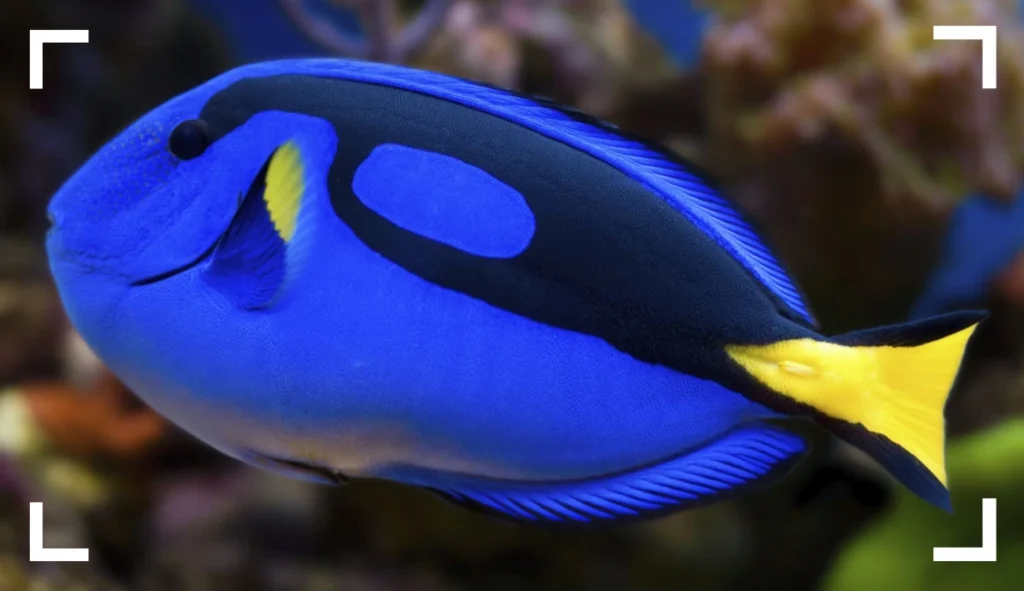
Blue Tang fish are beautiful and popular fish found in the waters of Cozumel. They are known for their bright blue color and oval-shaped bodies.
Why They’re Special:
- Bright Blue Color: Blue Tang fish have stunning, vivid blue scales with a yellow tail.
- Reef Cleaners: They help keep the coral reefs healthy by eating algae.
- Peaceful Nature: These fish are gentle and often swim in schools.
Where to See Them:
- Snorkeling Spots: Great places to see them include Chankanaab Beach Adventure Park and Dzul-Ha Reef.
- Diving Sites: Check out Colombia Reef and Palancar Gardens for close encounters.
4. Sergeant Major
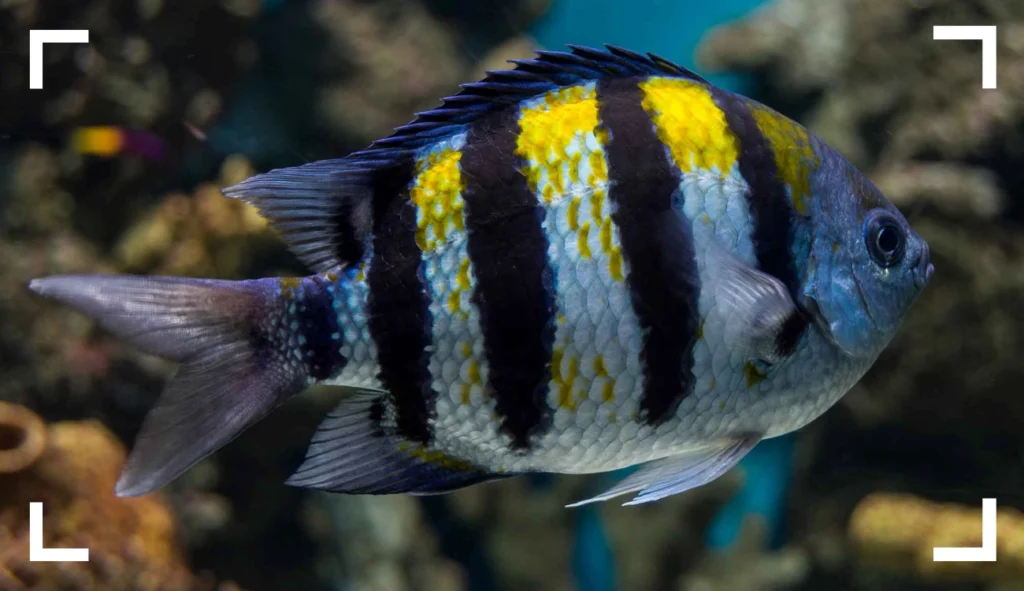
Sergeant Major fish are common in the waters around Cozumel. They are easy to spot with their striking stripes and active behavior.
Why They’re Special:
- Distinct Stripes: These fish have five black stripes on their sides, resembling a sergeant’s insignia.
- Colorful Bodies: Their bodies are bright yellow and blue, making them easy to see.
- Social Swimmers: Sergeant Majors often swim in large schools, creating a lively scene.
Where to See Them:
- Snorkeling Spots: Paradise Reef and Chankanaab Park are great places to find them.
- Diving Sites: Visit Palancar Reef and Columbia Reef for close encounters.
5. French Grunt
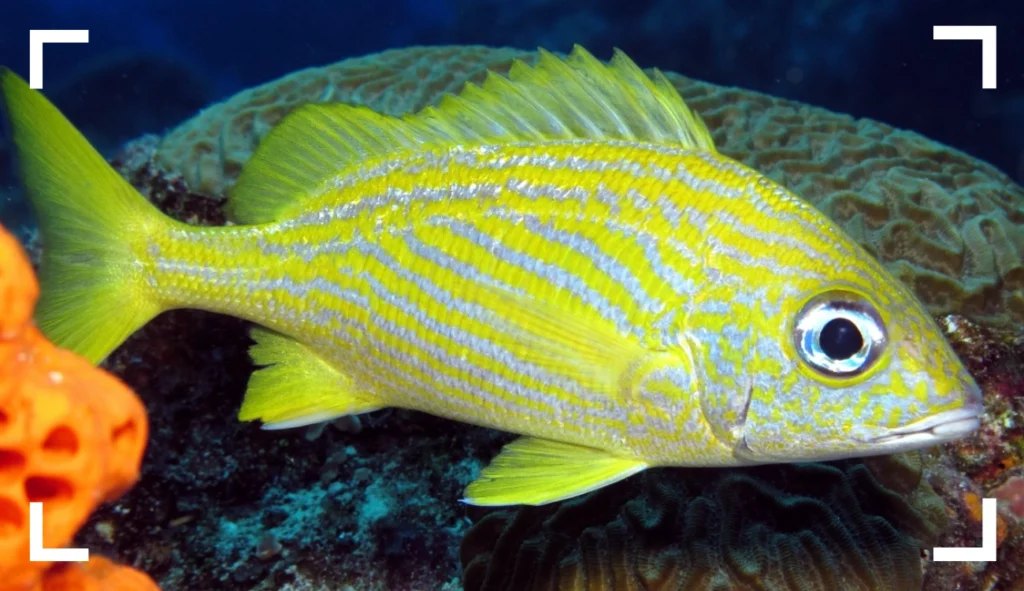
French Grunt fish are common in the waters around Cozumel. They are known for their bright yellow stripes and friendly behavior.
Why They’re Special:
- Yellow Stripes: French Grunts have striking yellow and silver stripes that make them easy to spot.
- Schooling Fish: They often swim in large groups, creating a beautiful underwater display.
- Reef Cleaners: They help keep the reef ecosystem healthy by feeding on small invertebrates.
Where to See Them:
- Snorkeling Spots: Look for them at spots like Chankanaab Park and Dzul-Ha Reef.
- Diving Sites: Popular diving locations like Columbia Reef are perfect for spotting French Grunt fish.
6. Damselfish
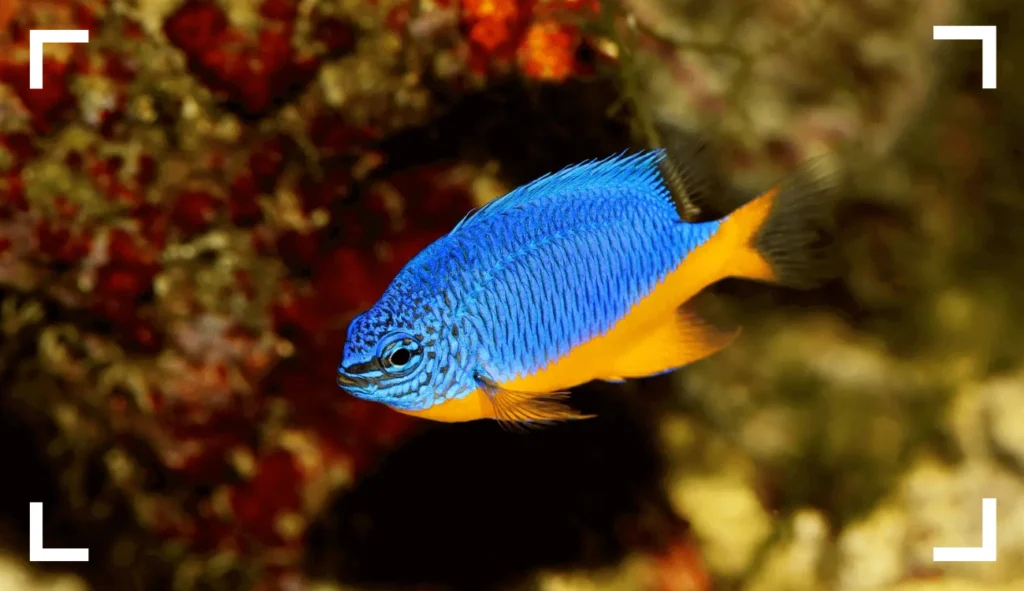
Damselfish are small, vibrant fish commonly found in Cozumel’s reefs. They are known for their bright colors and territorial behavior.
Why They’re Special:
- Bright Colors: Damselfish come in shades of blue, yellow, and black.
- Territorial: They fiercely protect their home, making them interesting to watch.
- Reef Guardians: They help keep the reef healthy by eating algae and deterring other fish.
Where to See Them:
- Snorkeling Spots: Good places include Chankanaab Park and Dzul-Ha Reef.
- Diving Sites: Visit sites like Paradise Reef and Columbia Reef for close encounters.
7. Butterflyfish
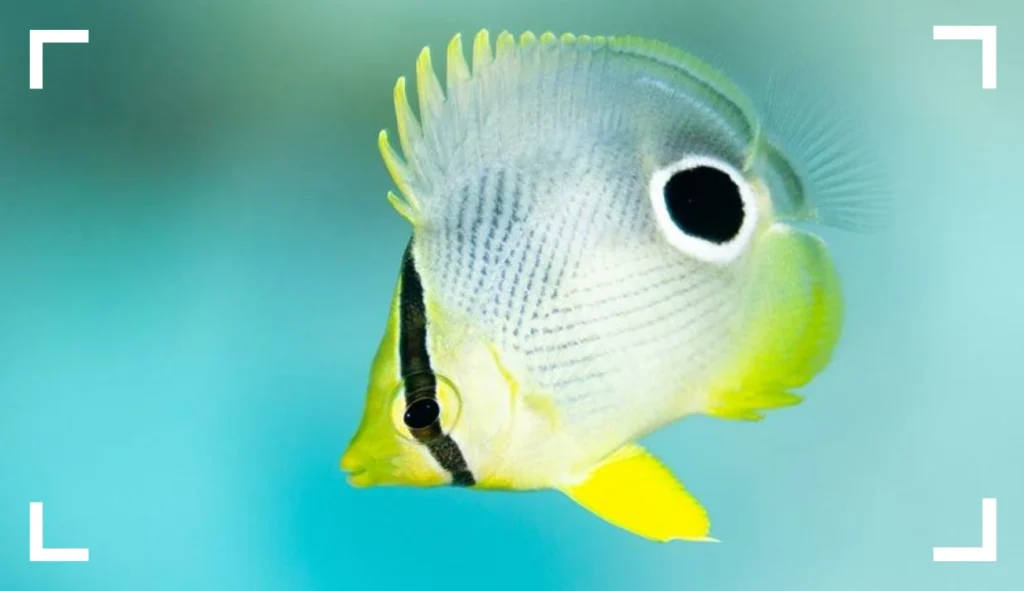
Butterflyfish are beautiful fish found in the waters around Cozumel. They are known for their bright colors and unique patterns.
Why They’re Special:
- Colorful Patterns: Butterflyfish have striking colors like yellow, white, and black with unique stripes or spots.
- Coral Protectors: They feed on small invertebrates, helping to keep the coral reefs healthy.
- Pair Swimmers: Butterflyfish often swim in pairs, which makes them fun to watch.
Where to See Them:
- Snorkeling Spots: Good spots include Chankanaab Park and Dzul-Ha Reef.
- Diving Sites: Paradise Reef and Palancar Garden are great for spotting butterflyfish.
8. Hogfish
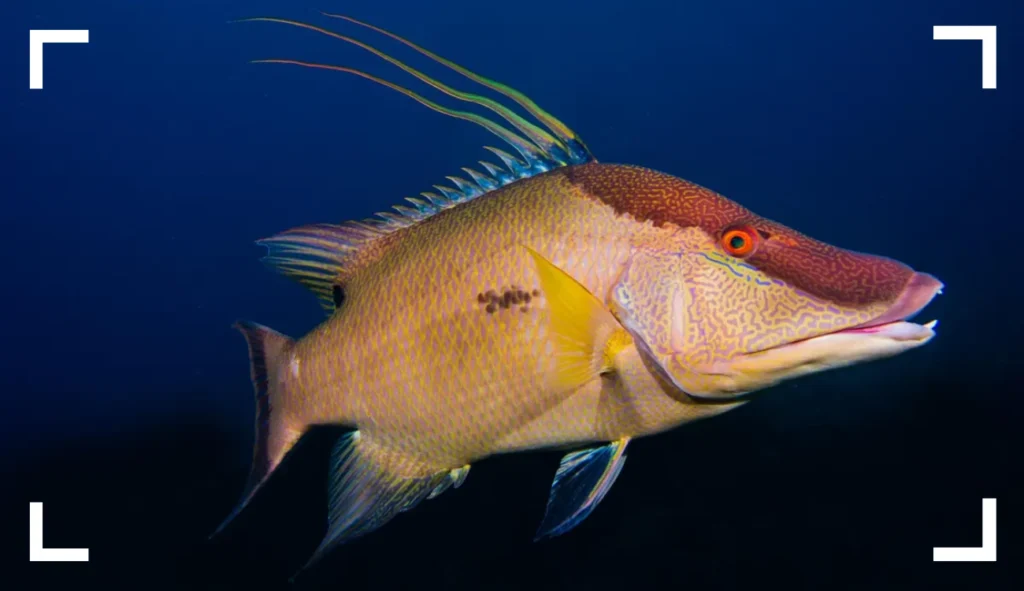
Hogfish are unique and interesting fish found in the waters around Cozumel.
Named for their pig-like snouts, hogfish are known for their curious nature and can often be seen poking around the reef.
Why They’re Special:
- Color Changes: Hogfish can change color from white to reddish-brown.
- Elongated Snout: They use their snouts to dig in the sand for food.
- Delicious to Eat: Hogfish are also popular in local cuisine for their tasty, white meat.
Where to See Them:
- Snorkeling Spots: Look for them at Chankanaab Park and Columbia Shallows.
- Diving Sites: Dive at Palancar Caves to spot hogfish hiding among the rocks.
9. Triggerfish

Recognizable by their unique shape and vibrant colors, triggerfish are a fascinating sight for snorkelers exploring Cozumel’s underwater world.
Why They’re Special:
- Distinct Appearance: Triggerfish have a flat, oval body and a strong jaw.
- Defensive Mechanism: They can “lock” their dorsal fins to wedge into crevices for protection.
- Bold Behavior: Some triggerfish can be territorial and may confront divers.
Where to See Them:
- Snorkeling Spots: Look for them at Chankanaab Park and Dzul-Ha Reef.
- Diving Sites: Dive at Santa Rosa Wall and Colombia Reef to spot triggerfish.
10. Pufferfish
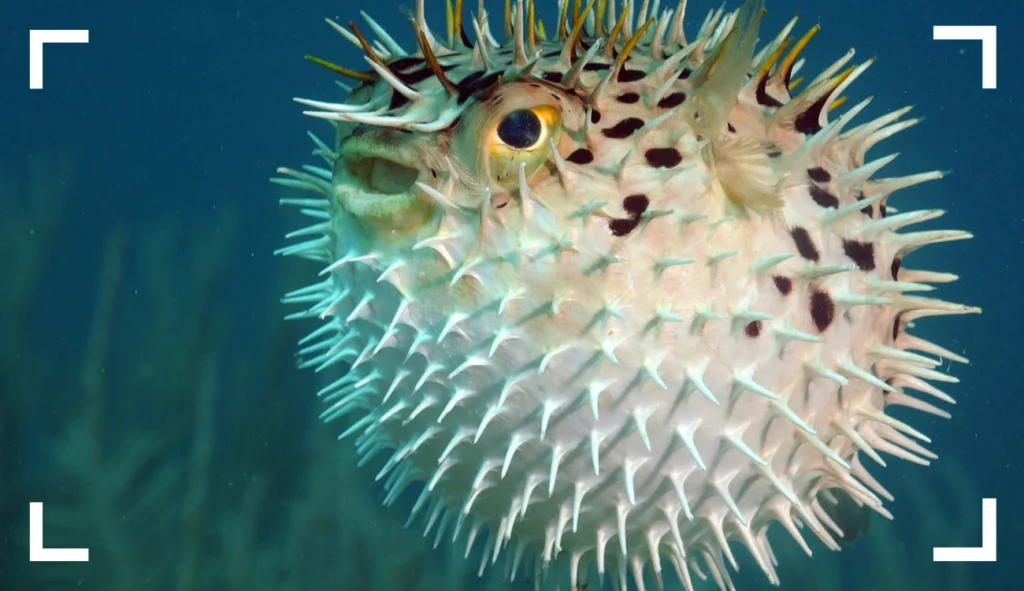
Pufferfish are fascinating creatures found in the waters around Cozumel. They are known for their ability to inflate into a ball shape when threatened.
Why They’re Special:
- Defense Mechanism: Pufferfish puff up to deter predators.
- Camouflage: Their spiky appearance helps them blend into their surroundings.
- Venomous Spines: Some species have toxic spines for protection.
Where to See Them:
- Reef Areas: Look for them near coral reefs and sandy bottoms.
- Dive Sites: Explore spots like Columbia Reef and Punta Sur for sightings.
Also Check: Swimming with Sharks in Cozumel
11. Grouper
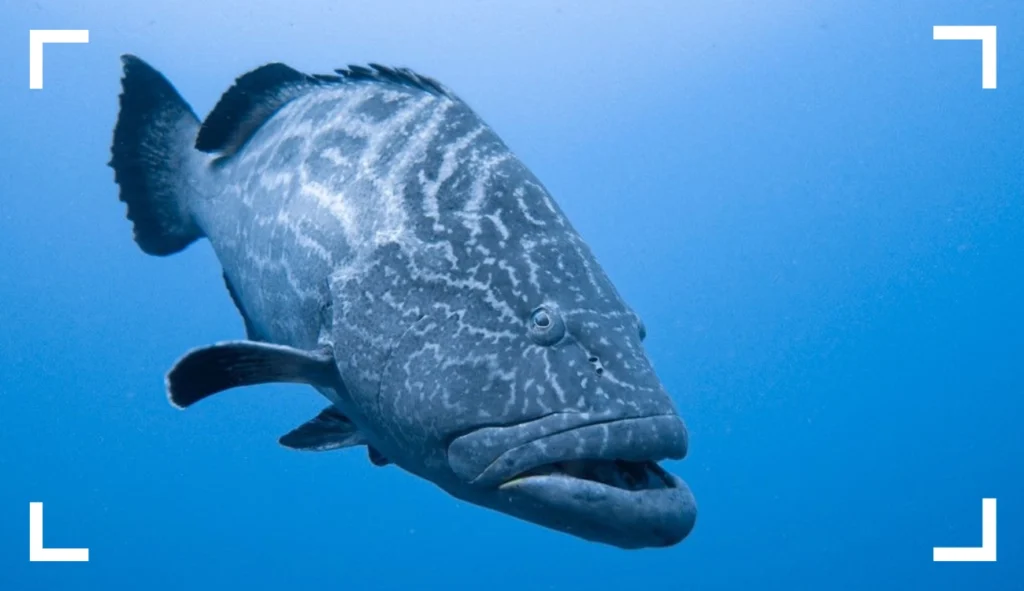
Grouper fish are common sights in Cozumel’s waters, known for their size and behavior.
With their large size and distinctive markings, groupers are often found lurking in caves and crevices.
Why They’re Special:
- Large Size: Grouper can grow to be several feet long and weigh over 100 pounds.
- Camouflage Experts: They blend into their surroundings using their colors and patterns.
- Hunting Strategy: Grouper ambush their prey by hiding in coral reefs or rocky crevices.
Where to See Them:
- Diving Sites: Explore places like Columbia Reef and Palancar Gardens.
- Fishing Charters: Join a guided fishing trip to try catching grouper.
12. Barracuda

Barracudas are sleek predators found in the waters around Cozumel, known for their streamlined bodies and sharp teeth.
Why They’re Special:
- Predatory Skills: Barracudas are fast swimmers and skilled hunters.
- Silvery Appearance: Their bodies are silver with dark markings on their sides.
- Top of the Food Chain: They prey on smaller fish and are essential for maintaining marine balance.
Where to See Them:
- Reef Edges: Look for them near coral reefs, especially at Palancar Gardens.
- Open Waters: Barracudas often patrol open waters, so keep an eye out during boat rides or diving sessions.
13. Snapper
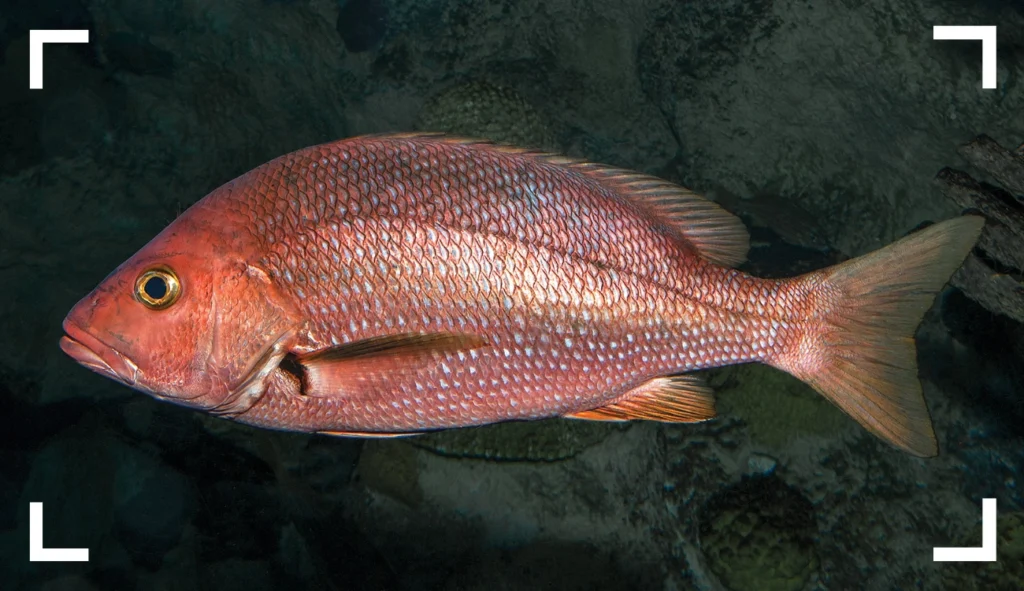
Snapper fish are a common sight in the waters around Cozumel, known for their delicious taste and distinctive appearance.
Why They’re Special:
- Flavorsome Meat: Snapper fish are prized for their tasty white flesh.
- Schooling Behavior: They often swim in large groups, making for impressive underwater spectacles.
- Reef Dwellers: Found near coral reefs, where they hunt smaller fish and crustaceans.
Where to See Them:
- Dive Sites: Explore places like Columbia Reef and Punta Sur to spot schools of snapper fish.
- Fishing Charters: Some local charters offer trips specifically targeting snapper, providing an opportunity for both viewing and catching.
14. Manta Ray
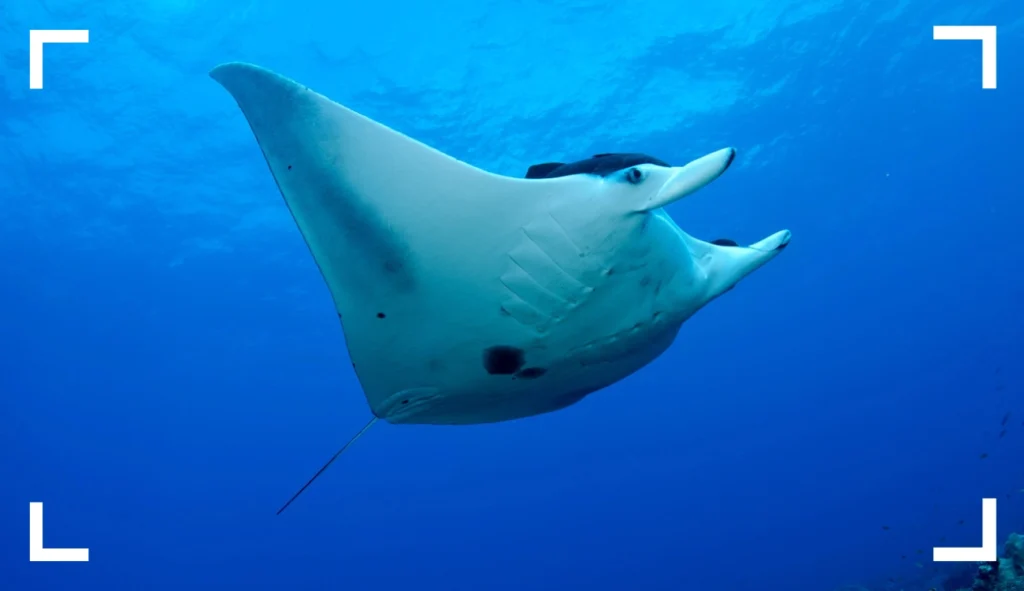
While less common, lucky snorkelers may spot a graceful manta ray gliding through the water with its distinctive wing-like fins.
Manta rays are majestic creatures that grace the waters around Cozumel, known for their impressive size and graceful movements.
Why They’re Special:
- Gentle Giants: Manta rays can grow up to 23 feet wide and glide through the water with ease.
- Filter Feeders: They feed on tiny plankton and small fish, filtering them through their gills.
- Diverse Species: Cozumel is home to several species of manta rays, including the giant oceanic manta ray.
Where to See Them:
- Dive Sites: Explore spots like Punta Sur and Colombia Reef for sightings.
- Boat Tours: Some tours offer snorkeling and diving opportunities to encounter these incredible creatures in their natural habitat.
15. Lionfish
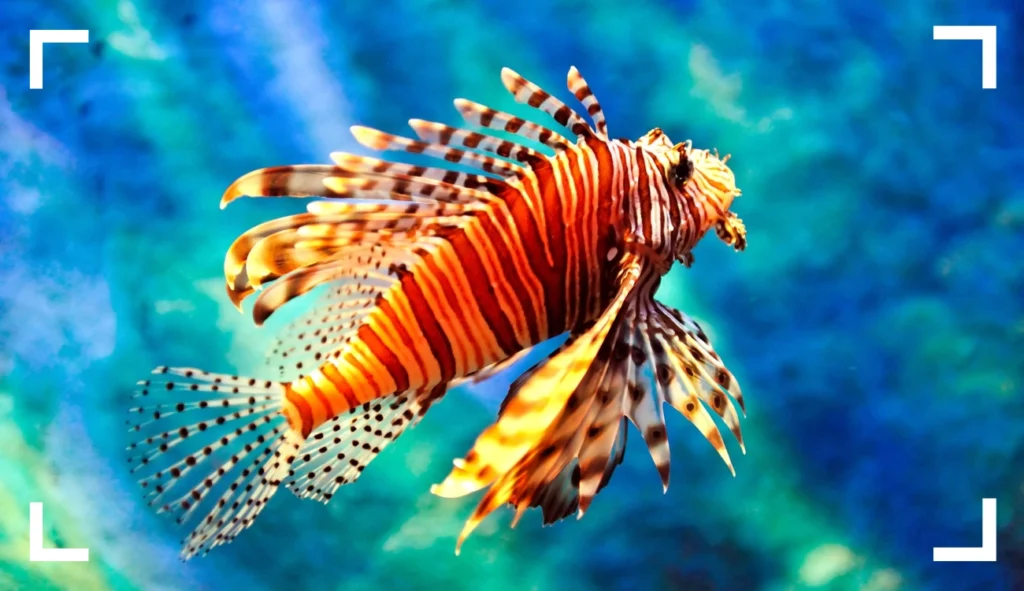
Lionfish are intriguing yet invasive creatures found in the waters around Cozumel. Here’s what makes them unique:
Why They’re Special:
- Venomous Spines: Lionfish have venomous spines along their back, used for defense.
- Invasive Species: Originally from the Indo-Pacific, they have become a threat to local marine life.
- Beautiful Appearance: Despite their danger, they have striking red, white, and black stripes.
Where to Find Them:
- Reef Environments: Look for them around coral reefs and rocky outcrops.
- Dive Sites: Explore places like Columbia Reef and Palancar Gardens to spot lionfish.
16. Boxfish
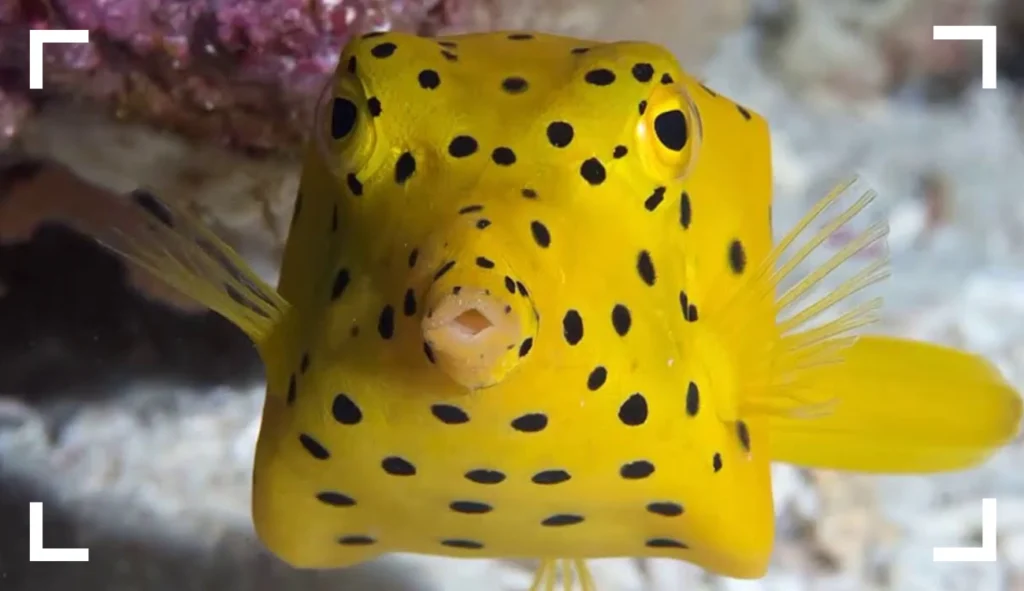
Boxfish are fascinating creatures found in the waters around Cozumel. They have a distinctive box-shaped body and come in various vibrant colors.
Why They’re Special:
- Unique Shape: Boxfish have a square-shaped body with rigid armor-like plates.
- Colorful Patterns: They display bright colors like yellow, orange, and black, often with striking patterns.
- Slow Movers: Despite their small size, they move slowly and gracefully through the water.
Where to See Them:
- Reef Areas: Look for them near coral reefs such as Columbia Reef and Palancar Gardens.
- Diving Adventures: Dive sites like Punta Sur and Yucab Reef offer opportunities to spot these intriguing creatures.
17. Stingray

While encounters are less common, snorkelers may spot a stingray gliding gracefully along the ocean floor, its flattened body blending seamlessly with the sand.
Why They’re Special:
- Unique Shape: Stingrays have flat bodies with long tails, making them look like underwater kites.
- Camouflaged Defense: Their sandy color helps them blend with the ocean floor, keeping them safe from predators.
- Gentle Giants: Despite their intimidating appearance, stingrays are usually gentle and peaceful.
Where to See Them:
- Shallow Waters: Look for them near sandy bottoms and seagrass beds.
- Snorkeling Opportunities: Popular sites like Chankanaab Reef and Dzul Ha Reef offer chances to observe stingrays in their natural habitat.
18. Trumpetfish

Trumpetfish are fascinating creatures found in the waters around Cozumel. They have a unique shape and behavior that make them interesting to observe.
Why They’re Special:
- Camouflage Experts: They can change color to blend in with their surroundings, making them hard to spot.
- Ambush Predators: Trumpetfish use their elongated bodies to sneak up on prey like small fish and shrimp.
- Curious Behavior: Sometimes they swim vertically to mimic coral or seagrass.
Where to See Them:
- Reef Environments: Look for them near coral reefs and seagrass beds.
- Snorkeling Sites: Explore areas like Columbia Reef and Chankanaab Reef for sightings.
Encountering these diverse Cozumel fish species while snorkeling and diving offers a thrilling and memorable experience, showcasing the beauty and biodiversity of the island’s underwater world.
Identifying Different Cozumel Fishes Species while Diving
When diving in Cozumel, identifying different fish species adds to the excitement of underwater exploration. Here’s how to spot and distinguish various Cozumel fish:
- Observe Coloration:
- Pay attention to the colors and patterns of the fish.
- Many Cozumel fish species boast vibrant hues and unique markings, helping you differentiate one species from another.
- Notice Size and Shape:
- Take note of the size and shape of the fish.
- Some species may have distinctive body shapes or fin configurations that set them apart from others.
- Refer to Field Guides:
- Before your dive, familiarize yourself with field guides or underwater identification charts specific to Cozumel fish species.
- These resources provide valuable insights and visual references to aid in identification.
- Look for Key Features:
- Focus on key features such as fin shapes, tail designs, and mouth structures.
- These characteristics often vary between species and can help narrow down your identification.
- Count Dorsal and Pectoral Fins:
- Counting the number of dorsal and pectoral fins can provide important clues for identification.
- Certain species have unique fin configurations that distinguish them from others.
- Note Behavior:
- Pay attention to the behavior of the fish.
- Some species may exhibit distinct swimming patterns, feeding behaviors, or territorial displays that aid in identification.
- Consult Dive Guides:
- If you’re unsure about a particular fish species, don’t hesitate to ask your dive guide for assistance.
- Experienced guides can offer valuable insights and share their knowledge of local marine life.
By combining these strategies and staying observant during your dives, you’ll become more adept at identifying the diverse array of Cozumel fish species.
List of all endangered Cozumel fish species that You should be aware of
- Cozumel Splendid Toadfish (Sanopus splendidus):
- This unique fish is endemic to the reefs around Cozumel and is listed as endangered due to habitat destruction and overfishing.
- Cozumel Coral Goby (Elacatinus lobeli):
- These small, colorful fish play a vital role in maintaining the health of coral reefs but are threatened by pollution and habitat degradation.
- Cozumel Splendid Dottyback (Pseudochromis splendens):
- Found in the shallow reefs of Cozumel, this species is vulnerable to overfishing and habitat loss caused by coastal development.
- Cozumel Reef Squid (Sepioteuthis sepioidea):
- These cephalopods are crucial prey for many larger predators on the reef, but their populations are declining due to pollution and climate change.
- Cozumel Seahorse (Hippocampus zosterae):
- This iconic species is facing threats from habitat destruction and collection for the aquarium trade, leading to a decline in numbers.
- Cozumel Queen Angelfish (Holacanthus ciliaris):
- Once abundant on Cozumel’s reefs, this species is now endangered due to overfishing and habitat degradation caused by climate change.
- Cozumel Electric Ray (Narcine bancroftii):
- These fascinating creatures are at risk due to habitat destruction and accidental capture in fishing gear meant for other species.
- Cozumel Splendid Garden Eel (Gorgasia preclara):
- These delicate eels are threatened by habitat destruction and pollution, which degrade the sandy habitats they depend on for shelter.
- Cozumel Blue Tang (Acanthurus coeruleus):
- Made famous by the movie “Finding Nemo,” these colorful fish are threatened by overfishing for the aquarium trade and habitat loss.
- Cozumel Nassau Grouper (Epinephelus striatus):
- Once a common sight on Cozumel’s reefs, these large predators are now endangered due to overfishing and habitat destruction.
It’s essential to raise awareness about these endangered Cozumel fish species and support conservation efforts to protect their habitats and ensure their survival for future generations.
Are there any Cozumel fish that are poisonous or dangerous to humans?
- Lionfish (Pterois volitans and Pterois miles):
- These striking yet venomous creatures are recognizable by their vibrant colors and distinctive spines.
- Lionfish venom can cause intense pain, swelling, and even paralysis if stung, making them one of the most dangerous Cozumel fish.
- It’s crucial to exercise caution and avoid contact with lionfish while snorkeling or diving.
- Scorpionfish (Family Scorpaenidae):
- Found in coral reefs and rocky areas, scorpionfish blend seamlessly with their surroundings.
- Their venomous spines contain a potent toxin that can lead to excruciating pain, swelling, and in severe cases, respiratory distress.
- Divers should be vigilant and avoid accidentally touching or stepping on these camouflaged predators.
- Stonefish (Synanceia verrucosa):
- With their mottled appearance resembling rocks or coral, stonefish are masters of disguise.
- Their dorsal spines are equipped with venom glands capable of delivering a potent neurotoxin.
- Encounters with stonefish can result in severe pain, tissue necrosis, and even death if left untreated.
- Moray Eels (Family Muraenidae):
- While not inherently aggressive, moray eels can deliver a painful bite if provoked or mistaken for food.
- Their mouths contain numerous sharp teeth capable of inflicting serious injuries to unsuspecting divers.
- Despite their intimidating appearance, moray eels typically avoid humans unless threatened or provoked.
- Barracuda (Family Sphyraenidae):
- Known for their sleek, torpedo-shaped bodies and sharp teeth, barracudas are formidable predators.
- While attacks on humans are rare, barracudas may become aggressive if provoked or cornered.
- Divers should exercise caution and avoid sudden movements around these powerful Cozumel fish.
- Triggerfish (Family Balistidae):
- Triggerfish are known for their territorial behavior and may aggressively defend their nesting sites.
- Divers have reported incidents of triggerfish biting or nipping at fins and exposed skin.
- While their bites are generally not venomous, they can cause injury and discomfort.
- Pufferfish (Family Tetraodontidae):
- Despite their endearing appearance and ability to inflate like balloons, some species of pufferfish harbor potent toxins.
- Consumption of improperly prepared pufferfish, known as fugu in Japanese cuisine, can be fatal due to tetrodotoxin poisoning.
- While encounters with pufferfish are rare during diving or snorkeling, it’s essential to exercise caution when handling them.
FAQs about Cozumel fishes
Are there any restrictions on catching Cozumel fish for recreational fishing?
Yes, there are regulations in place to ensure sustainable fishing practices and protect Cozumel’s marine biodiversity. These restrictions aim to preserve fish populations and maintain the ecological balance of the reef ecosystem.
Are there any guided tours available for observing Cozumel fish?
You’ll find plenty of guided tours geared toward observing Cozumel fish. These excursions offer an incredible opportunity to explore the island’s underwater wonders with knowledgeable guides leading the way.
